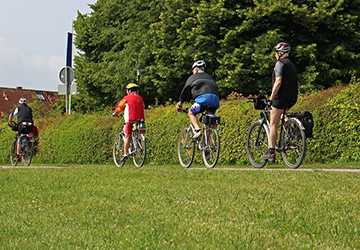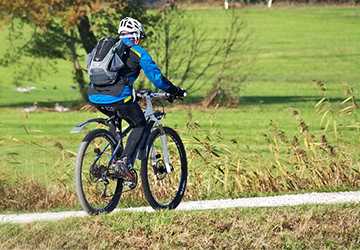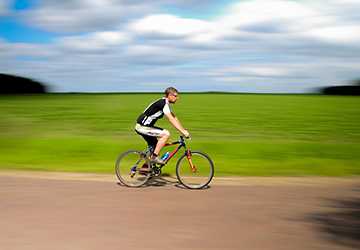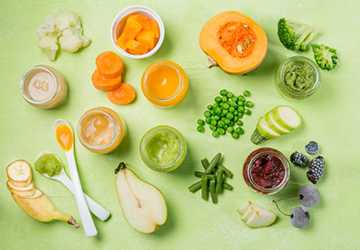How to Build Strength and Endurance for Cycling
Cycling is a fantastic way to stay fit, explore your surroundings, and enjoy the outdoors. Whether you are a casual rider or aspiring to become a pro, building strength and endurance is critical to improving your cycling performance. This article will dive into practical, straightforward tips to help you pedal stronger and longer.
Start with a Solid Foundation
Before jumping into intense training, ensure your bike fits you correctly. A bike that's the right size and adjusted to your body will reduce the risk of injury and help you ride more efficiently. If you need more clarification, consider getting a professional bike fitting.
Furthermore, regularly check your bike's tire pressure, brakes, and gears. A well-maintained motorcycle not only performs better but also enhances your riding experience. Learning basic bike maintenance skills can save you time and money in the long run.

Get the Right Gear
Having the proper cycling gear is crucial. Invest in a comfortable helmet, padded shorts, moisture-wicking clothing, and good-quality shoes. A comfortable rider is a strong rider.
Remember accessories like gloves, sunglasses, and sunscreen. These items protect you from the elements and improve your comfort during long rides. And, of course, only leave home with a water bottle to stay hydrated on the road.
Gradually Increase Your Mileage
Building endurance starts with patience. Begin with shorter rides and gradually increase the distance over time. Aim for a mix of more straightforward, faster, and longer, slower rides to build speed and stamina.
Consider setting weekly mileage goals. For instance, increase your weekly mileage by 10% to 15% each week. This gradual approach reduces the risk of overuse injuries and allows your body to adapt to the increasing demands of cycling.
Focus on Cadence
Cadence is the number of revolutions your pedals make per minute. Aim for a cadence between 80 to 100 RPM (revolutions per minute) for most rides. This cadence allows you to use your muscles more efficiently and reduces fatigue risk.
To maintain a consistent cadence, shift gears as needed. Lower gears make it easier to pedal, while higher loads provide more resistance. Practice shifting smoothly to find the right rhythm for different terrains and conditions.
Include Interval Training
To boost both strength and endurance:
1. Try interval training.
2. Ride at maximum effort for a short burst (about 30 seconds to 2 minutes), then recover slower.
3. Repeat this cycle several times during your ride.
Interval training helps you build power and stamina.
When doing interval training, pay attention to your breathing. Deep, controlled breaths will help you sustain high-intensity efforts and recover more effectively between intervals. As you progress, you can increase the duration and intensity of your intervals for more significant gains.
Hill Climbing
If you want to build leg strength, find some hills. Climbing hills challenge your muscles and improve cardiovascular endurance. Start with smaller hills and gradually tackle steeper ones as your strength increases.
When climbing hills, shift to lower gears to maintain a comfortable cadence. Focus on a smooth, steady pedal stroke and use your core muscles to stabilize your body. Don't be discouraged by hills; they're your ticket to becoming a stronger cyclist.
Cross-Training
Don't limit yourself to just cycling. Cross-training activities like running, swimming, or strength training can help develop overall fitness and reduce the risk of overuse injuries. They also provide variety to your workout routine.
Consider incorporating yoga or stretching routines into your weekly schedule. These activities improve flexibility, enhancing your riding comfort and preventing muscle tightness. A balanced approach to fitness will keep your body in top form for cycling adventures.

Fuel Your Body
Proper nutrition is essential for building strength and endurance. Eat a balanced diet rich in carbohydrates, proteins, and healthy fats. Stay hydrated before, during, and after your rides. During longer rides, snack on energy-boosting foods like bananas, energy bars, or nuts.
Remember that nutrition is a personalized journey. Experiment with different foods to find what works best for you. And always carry a water bottle to stay hydrated on those hot summer rides. Please focus on your body's cues and fuel them accordingly to keep your energy levels up.
Rest and Recovery
Rest days are just as important as training days. Your muscles need time to repair and grow stronger. Listen to your body, and don't push yourself too hard. Incorporate stretching and foam rolling into your routine to prevent muscle tightness and injury.
Sleep is a critical component of recovery. Aim for 7-9 hours of quality sleep per night to allow your body to recharge fully. Rest doesn't mean you're slacking off; it's an integral part of the process that enables you to come back stronger and ready to conquer the road.
Consistency is Key
Building strength and endurance takes time. Stay consistent with your training schedule, even if progress seems slow. Every pedal stroke you take is a step towards improvement.
Create a training plan that fits your lifestyle and commitments. Consistency doesn't mean pushing yourself to the limit every day; it means sticking to your schedule and gradually increasing the intensity and duration of your rides over time. Celebrate small victories and stay motivated by setting achievable goals.
Join a Cycling Group or Club
Cycling with others can be motivating and enjoyable. Joining a local cycling group or club can provide the camaraderie and support you need to stay committed to your training. Being part of a cycling community opens up new opportunities for group rides, socializing, and learning from more experienced riders. It's a chance to share your passion and grow as a cyclist while making lasting connections.
Track Your Progress
Keep a record of your rides and track your progress. Use a cycling app or a simple journal to log your distance, time, and notable ride details. This will help you set goals and measure your improvements.
Analyzing your ride data can provide valuable insights into your performance. You can identify areas that need improvement and adjust your training plan accordingly. Plus, looking back and seeing how far you've come since you started your cycling journey is satisfying.
Conclusion
Building strength and endurance for cycling is achievable with dedication and the right approach. Remember, it's not about being the fastest rider but enjoying the journey and becoming the best version of yourself on two wheels. So, hop on your bike, embrace the wind in your hair, and pedal your way to a healthier, fitter you. Happy cycling!



















